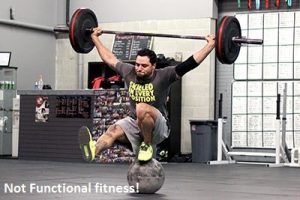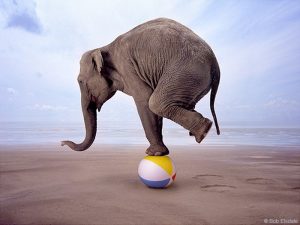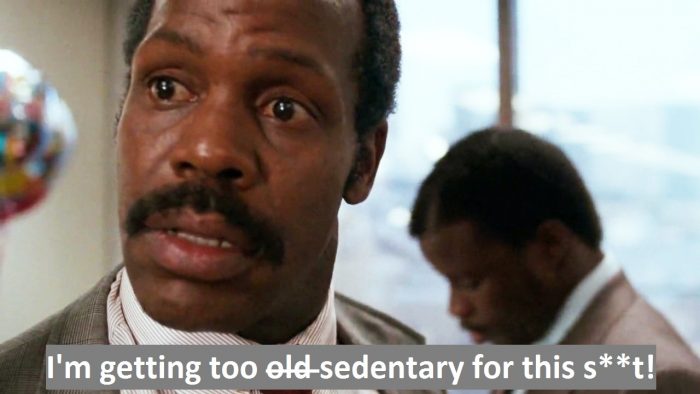One of my all-time favourite quotes is from George Bernard Shaw, it’s a clever phrase but also an incredibly insightful one- “We don’t stop playing because we grow old, we grow old because we stop playing.” Aging is slow, tortoise slow, and it’s only catching us because we are letting it. There is no doubt that we will slow down over the decades, but the decline we generally see and attribute to ageing actually has more to do with one’s activity level than it does with one’s birth date. For proof we need only look to the people that seemingly defy their age, cycling their bikes in their 90’s, running marathons, lifting weights, jumping out of planes or this guy-
But it isn’t their age that they are defying but the tendency to stop playing/moving/exercising! We don’t stop running because one day we wake up and suddenly we can no longer run. We see a progressive decline in our abilities, because we stop using them. Just as we train our bodies to get better at something, when we don’t, we get worse. It’s a use it or lose it system.
This is from Dr. Sreekumaran Nair, a professor of medicine and an endocrinologist at the Mayo Clinic, and lead author in a recent study published in Cell Metabolism. “It seems as if the decline in the cellular health of muscles associated with aging was “corrected” with exercise, especially if it was intense. In fact, older people’s cells responded in some ways more robustly to intense exercise than the cells of the young did — suggesting, he says, that it is never too late to benefit from exercise.”
“Based on everything we know, there’s no substitute for these exercise programs when it comes to delaying the aging process. These things we are seeing cannot be done by any medicine. . . . Exercise is critically important to prevent or delay aging. There’s no substitute for that.”
So what is it that we need or should be doing for good physical health and function throughout the lifespan? Functional Fitness. Now everyone has heard this term before, but likely from a source that hadn’t a bull’s notion of what it actually means. I’ve included a picture below of what it isn’t, unless maybe you’re training to be a performing act in a circus!


I heard this definition first from Craig Liebenson, “Functional fitness is that which is purposeful for the individual.” This definition I believe, is what everyone should be working from.
So functional fitness will vary from person to person, according to what is important for you. A golfer, hiker, runner, block layer, banker and truck driver will all differ by degrees in terms of what levels of each component of fitness they need. In truth, the banker and golfer probably won’t differ all that much! However there are prerequisites or base levels of fitness that everyone needs in order to hold up to the rigors of daily living. Below I’ve listed some common examples of challenges to different components of fitness.
Strength– Standing and sitting from a chair, or indeed the toilet, particularity eastern toilets! Carrying a suitcase. Lifting a child. Carrying the shopping.
Mobility and flexibility– The ability to effortlessly put your shoes and socks on in the morning. Bending over safely to pick something up. Turning your head to check blind spots when driving.
Balance- ability to navigate uneven surfaces, avoid falls, walk unaided.
Cardiorespiratory Endurance– Walk to the shops, walk up the stairs, play with a 5 year old or run for your life!
Muscular endurance– Ability to perform a task repeatedly without compromising favourable posture and risking injury, for example when hoovering or gardening.
Reading this you may think that we don’t need any training for the aforementioned abilities. You could argue that we shouldn’t but our modern lifestyle dictates that we do. We sit too much, work too much, spend too much time on electronics and sleep too little, and all of these things along with other factors have a negative impact through various mechanisms on our physical health. Consider the fact that lower back pain is the leading cause of disability in the world, (Hoy and March, 2010.) Show me any back pain sufferer and I will show you the deficits in their functional fitness.
So the solution is clear, simple even. Regular, purposeful and sometimes vigorous exercise. Unfortunately it’s not always easy! If you’re really unfit, deconditioned, in chronic pain or very overweight, returning to functional fitness can be a real challenge, but it is eminently possible. Any actual or perceived discomfort from exercise pales in significance to the pain of disability. Fortunately we have a choice.
Closing thoughts.
Age isn’t determinant of one’s physical health or fitness, but one’s physical activity level is. Good health and longevity is multifactorial, however the beauty of regular exercise is that it can have and often does have an overarching positive effect on other aspects imperative to good health like quality sleep and stress levels.
If you are in the general Killarney area and are interested in learning more about how you can improve your health and fitness, get in touch for a free consultation.
Ed O Donovan
Works cited:
Enhanced Protein Translation Underlies Improved Metabolic and Physical Adaptations to Different Exercise Training Modes in Young and Old Humans. Cell Metabolism, 2017. DOI: 10.1016/j.cmet.2017.02.009
The global burden of low back pain: estimates from the Global Burden of Disease 2010 study. Hoy, March et al.
